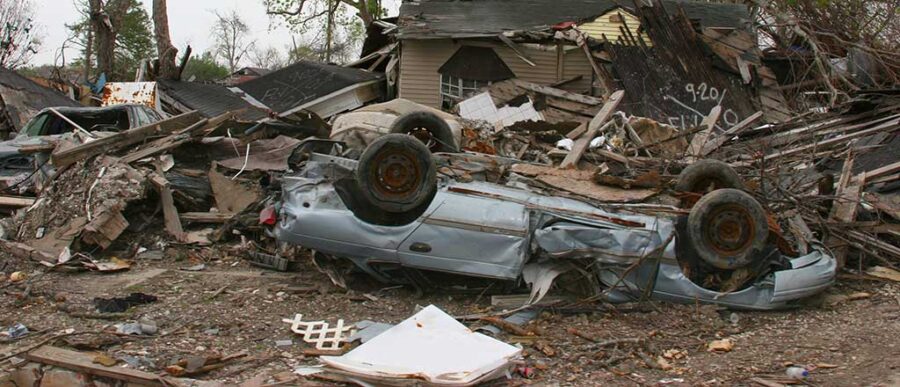For the poor, like Yamileth Centeno, problems compound when disaster strikes. The electrician from Lake Charles, Louisiana, lost her job in the pandemic and was living on her $222 unemployment check when Hurricane Laura hit, destroying her car and rental home.
“I’m at zero,” Centeno told Buzzfeed last month.
Research has shown that poor cities and towns such as Lake Charles, which had a 23% poverty rate before the storm, are often the slowest to recover from disaster because they receive the least amount of federal aid. Low-income groups and communities of color are disproportionately affected, often lacking insurance, access to credit and the resources to apply for what little aid is available. That’s why scholars who study disaster recovery are advocating for better federal policies — and greater funding — to help the most vulnerable communities and citizens prepare and rebound from hurricanes, fires, floods and other catastrophes.
“There’s an assumption that federal disaster aid will make these people whole, but it actually doesn’t. It’s difficult to access, insufficient and often delayed, so we have a real challenge in helping these families post-disaster,” Carolyn Kousky, executive director of the Wharton Risk Management and Decision Processes Center, said during an interview with the Wharton Business Daily radio show on SiriusXM. (Listen to the podcast at the top of this page.)
In their first online policy collaboration, the Risk Center and The Urban Institute brought together experts who agreed on several recommendations to prioritize the poor in disaster recovery:
- Simplify the application process.
Applying for federal aid is an onerous task, especially for those with physical disabilities, no transportation or limited language skills. In addition, low-income or undervalued homes often don’t meet the criteria for aid, Kousky said. She called for one streamlined application with easy steps and better data sharing among federal agencies.
- Expand the amount of aid.
Simply put, disaster mitigation and recovery need more money, especially as climate change threatens to increase both the frequency and severity of natural disasters. Most disaster aid only covers very large events, comes weeks or months later and mostly doesn’t flow directly to affected households. The money typically is given to state and local governments for infrastructure repair.
“Even if households get some of that money, often for things like risk reduction, it is literally months or years between when the disaster hits and when those dollars arrive,” Kousky said. “For example, after [Hurricane] Harvey, it took Congress six months to even appropriate those dollars, let alone get the program stood up and the dollars flowing down to the state and local government.”
In an opinion piece for The Hill, Kousky and Carlos Martin, senior fellow at the Urban Institute’s Metropolitan Housing and Communities Policy Center, advocated for permanent authorization of Community Development Block Grants for Disaster Recovery to ensure adequate funding for catastrophic events.
- Do more to prepare.
Although the federal government has been spending more money on disaster mitigation and recovery, recent events suggest even more is needed. Just in the last several months, California has been devastated by numerous wildfires while the Southeast has been pummeled by hurricanes. In September, five storms were churning in the Atlantic Ocean at once, which has never happened in recorded history.
“Even if households get some of that money … it is literally months or years between when the disaster hits and when those dollars arrive.”
“We need to be doing a lot more pre-disaster to really strengthen our buildings, move out of harm’s way, and invest in climate resilience activities so that we don’t suffer so much damage when the fire starts or the hurricane makes landfall,” Kousky said.
More careful preparation, easier applications and more money are key to lifting the most fragile populations during a disaster and helping people like Centeno rebuild their lives in place. Days after the storm, she and her daughter obtained a hotel voucher and headed for Dallas.
“I’m hopeful and worried at the same time because being in a hotel doesn’t feel like home,” she said in the Buzzfeed article. “I miss my home more than anything.”



